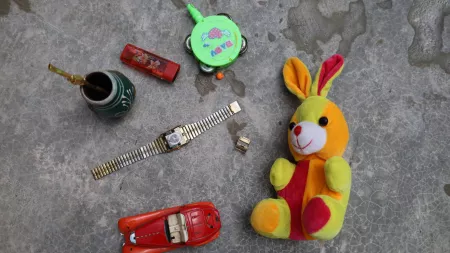A mortar and pestle. A ring. A notebook. A colored pencil. A baseball. Coffee cups. Clothes their daughter would have worn, had she lived.
These are just a few of the things Ammar, Qasem, Amira, Shams, and Mohammed could rescue from the rubble in the aftermath of the earthquakes that hit Türkiye and Syria on February 6.
They had already been forced to choose what to keep once before – by the conflict in Syria that began in March 2011 – and now, twelve years later, they were being forced to choose again.
A ring
Qasem grew up in Homs, and when he left, he knew he wouldn’t be able to take everything. But he had decided to keep a memento of a friend who had passed away – a ring – which he put it in a box his grandfather had given him for safekeeping.
He’d had the ring for 15 years, tucked safely away in that small family heirloom. When the earthquake hit, he didn’t give it a second thought.
“I was only thinking how I would save my kids,” he said. “I carried them on my shoulders to the street. My wife was running. It was unbearably cold outside and raining.”
Only later, did he realize he didn’t have the box, or the ring.
“We were just happy to be alive.”
But he’d treasured the ring for so long, so he tried to go back into the rubble and search through what remained of his house. He managed to recover the box – along with a comb, his phone, and toys for his two children.
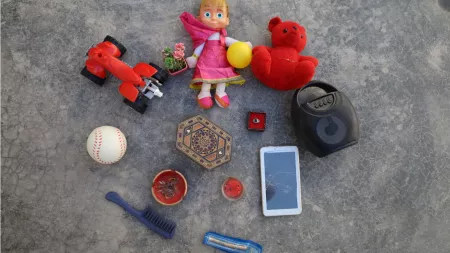
A notebook
Seven-year old Amira and her brother were woken up by their parents screaming.
“The house was wobbling and we got really scared,” Amira said.
“Everyone around was shouting and running in every direction,” Shams said. “We felt we wouldn’t make it.”
But they did make it, and the next day they asked for their notebook and pencils so they could draw. Their father went back into what was left of their home and found them.
Alia, who works with Shafak, a CARE partner in northwest Syria, has provided regular psychosocial support sessions for women and children who lost their homes in the earthquakes.
“Children ask for toys and dolls,” she says. “We rarely think about toys and dolls during emergencies because we prioritize dealing with essentials like food, hygiene kits, mattresses, covers, but children look at the world with different eyes.”
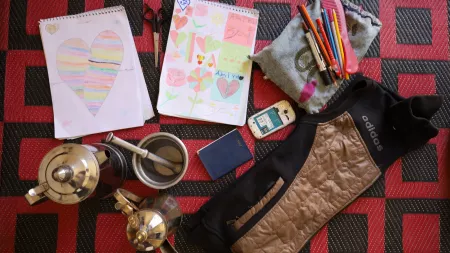
A mortar and pestle
Government reports have said that more than 175,000 buildings collapsed or were heavily damaged by the earthquakes, and that the disaster has generated more than 116 tons of rubble across the region.
“Our home already had cracks in the walls and roof,” Ammar said. He was born in Homs, but the conflict forced him to Afrin, Aleppo, where he lived with his wife and two children when the earthquakes struck.
“I jumped out of bed, pushed my wife, grabbed our daughters and rushed to the street,” he said.
The next morning, Ammar – like Qasem, Amira, and Sham’s father — returned to rescue what he could of his family’s belongings.
“I managed to find some clothes for my daughters,” he said. And he also managed to find his wife’s wooden mortar and pestle.
“It is very special to her. She got it from her grandma.”
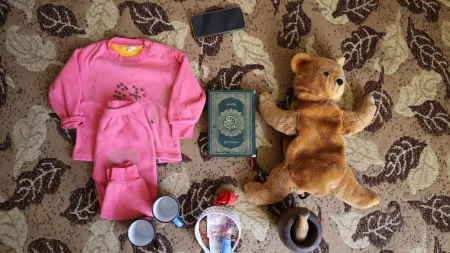
The clothes she would have worn
The situation in Syria had already been described as one of the worst humanitarian crises of the century, even before the earthquakes.
Over the past twelve years since the conflict began, more than 300,000 civilians have died, 6.8 million people have been internally displaced, and another 5.4 million Syrians have been forced to flee to Türkiye, Jordan, Lebanon, Iraq, and Egypt.
Over two thirds of the country’s population need humanitarian assistance, and, in the 'last resort' sites in northern Syria, a cholera outbreak has put over a million people at even further risk.
The earthquakes have now killed more than 50,000 people and injured tens of thousands more across 148 cities and towns in the north-west region. The crisis has disrupted the lives of 17.9 million people, displacing 2.7 million people and forcing 1.9 million to live in temporary shelters.
Mohammed’s daughter was only nine days old on February 6th.
“My wife was having postpartum pain and could barely walk,” he said. “Yet we managed to come out together. It was dust all over coupled with heavy rain and intolerable cold.”
The couple were originally from Damascus, but the conflict in Syria forced them to start their lives over in the small apartment in Aleppo. The earthquake pushed the new family out into the street.
“The little one could not take it,” Mohammed said. “She was having difficulty breathing and getting weaker by the minute. I rushed her to a nearby hospital, but it was already too late.”
In the days afterwards, Mohammed returned to their apartment to recover what he could. A teddy bear. A onesie. Fingernail clippers.
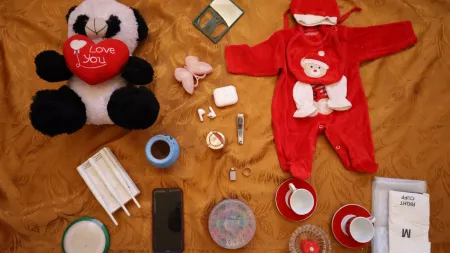
Only images
“It all came back to me the morning the earthquakes started,” Sara Al-Matar, a CARE Türkiye staff member said. “Memories of the conflict in Syria when we had run out to the streets to find a safe place to hide.”
For the hundreds of thousands of Syrians like Sara, the earthquakes brought on terribly familiar feelings.
“When the earthquake happened, I spent four days looking for my parents in Antakya until I found them under the rain in one of the public parks sitting next to the dead bodies of my relatives. I tasted death in those moments.”
For the survivors, it seemed to take almost everything they had to simply keep going.
“Most of my childhood friends and their families died in the earthquake,” said Leman Yildirim, a Services and Liaison Coordinator at CARE Türkiye. “Not one single tangible place from my childhood memories survived.
“Now, only images of those places exist in my head,” she said, describing the destruction that engulfed her hometown Kirikhan, a district of Hatay, one of the most heavily impacted regions.
Leman had been planning to get married on February 12. But after the earthquakes she canceled the celebrations and got married at a city hall instead.
As part of her work at CARE, Leman handled all requests coming in from the government’s crisis management mechanisms in Hatay, Adıyaman, Şanlıurfa, and Adana.
She spearheaded early assessments about conditions and needs there and helped coordinate the delivery of life-saving supplies to various municipalities, including flour for bread, dry food for hot meals, heaters, hygiene kits and drinking water. She used her own car to help with the distribution of baby food, diapers, and blankets.
“I started volunteering at the local municipality as soon as the earthquakes struck,” she said. “I wanted to help. It is my duty to do so. I was lucky I survived. I am also lucky to have a car in which I spent the first night of the earthquake while other people had nothing and were sleeping on the street in the cold and in the snow.”
Sara felt a similar sense of duty.
“I thought about all the people who need our help and support. I thought about the office and my colleagues, wondering if they were all ok and whether we would ever be able to work again,” she said.
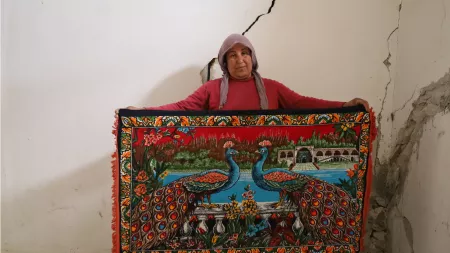
CARE's response
CARE has been able to work again, reaching 384,670 people through shelter, food, health, protection and water, sanitation and hygiene (WASH) support, as well as continuing to work to scale up its earthquake emergency response, alongside CARE’s regular emergency response programming in northwest Syria. But the crisis is far from over.
“Now, after the earthquake, women and vulnerable communities across both northwest Syria and Türkiye are enduring additional trauma and debilitating new burdens,” said Sherine Ibrahim, CARE Türkiye Country Director.
“It is a tragedy atop a tragedy, and it is clear today that the immediate as well as long-term consequences of this new evolving humanitarian crisis will have far reaching negative impacts on their mental health, and their physical and social well-being.”- Sherine Ibrahim, CARE Türkiye Country Director
CARE’s staff and partners, like Sara and Leman, continue to work, despite the circumstances to help rebuild and restore what’s been lost. But it remains a struggle.
“Before the earthquake, we as Syrians had begun to feel a sense of stability as hope had begun to return to us,” said Basma Mardini, who works as the Food Security and Resilience Project Assistant at CARE Türkiye. “Now we have lost that stability completely. I am no longer able to think of the future anymore.”
Twelve years after the start of the conflict in Syria, and only a few weeks after the earthquakes, CARE is calling for a more comprehensive approach to humanitarian assistance in Syria to support people like Basma.
“Whenever I enter the home of a family we assist, I feel how grateful they are that somebody still cares for them,” said Basma. “This makes me feel that I am still alive, and that we are one hand and still one people.
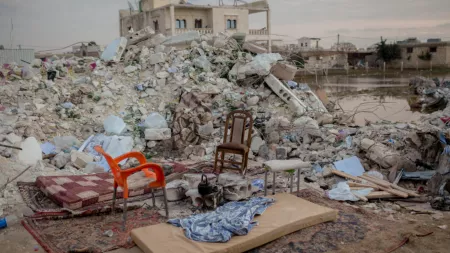
CARE International has been working in Syria since 2013 responding to the crisis through a network of partners. Our response in Syria includes support for food security and re-establishing livelihoods. With partners, we provide reproductive, primary care, and maternal health, as well as shelter, clean water, and proper sanitation. We also distribute relief supplies and multi-purpose cash vouchers for food as well as hygiene and baby kits, dignity kits for the elderly and sanitary products.
Read more on our work in Syria